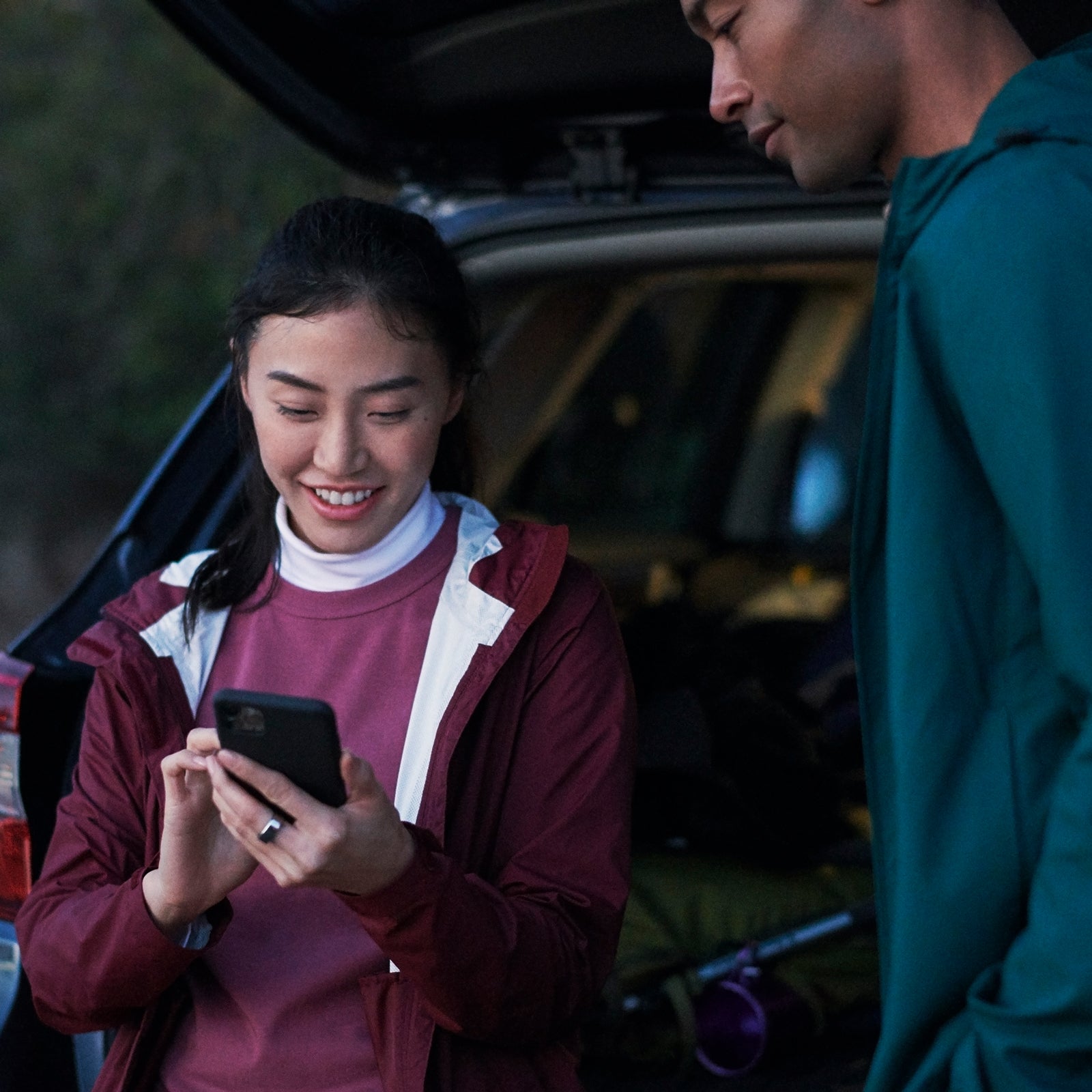Despite some initial hesitations, Petri Hollm├ęn had a hell of an Austrian ski trip. He and nine friends spent a textbook mountain weekend in St. Anton in early March, hammering the slopes by day, enjoying lagers and schnitzel by night. Sure, coronavirus╠řĚ╔▓╣▓§ a thing╠řin Europe╠řthen. But the data showed that╠řinfections╠řwere mostly centered in northern Italy. There were supposedly only 20 or so cases in AustriaÔÇÖs╠řentire 750,000-person Tyrol region. So why not ski?
ÔÇťI didnÔÇÖt notice anyone sneezing or coughing on my flights or on the chairlift. I used hand sanitizer and washed my hands like never before,ÔÇŁ says Hollm├ęn, a fit╠ř40-year old╠řFinnish entrepreneur. (Picture Bode Miller with a Finnish accent.) ÔÇťI got home Sunday evening, and by Tuesday, I heard that the area in╠řTyrol I was in was declared .ÔÇŁ
Hollm├ęn worked from home the next day out of precaution, even though he ÔÇťfelt totally fine,ÔÇŁ he says. Thursday, too. But that morning, his ╠řfitness trackerÔÇöwhich gives wearers a daily╠řÔÇťreadinessÔÇŁ score╠řbased on their level of recoveryÔÇödisplayed an oddity. ÔÇťMy score was 54,ÔÇŁ he says. ÔÇťFor me╠řthat is very, very low. IÔÇÖm usually in the eighties╠řand nineties.ÔÇŁ Part of the reason Hollm├ęnÔÇÖs score was so low was╠řthat his body temperature, which the ring measures along with╠řother biometrics like heart-rate variability╠řand respiratory rate to formulate that readiness score, was about two degrees higher than usual throughout the night.╠ř
ÔÇťI still felt fine, and I tested myself with a thermometer in the morning, and my body temperature was normal,ÔÇŁ he says.╠řHollm├ęn╠řĚ╔▓╣▓§ going to shrug the╠řtemperature anomaly╠řoff,╠řbut╠řhis wife, a medical researcher,╠řtold him to check in with his doctor. ÔÇťThey had me come in for a test. The doctors came out with these space suits on and stuck a cotton stick up my nose,ÔÇŁ he says. ÔÇťAnd they called me back after an hour or two and said I was COVID positive.ÔÇŁ╠ř
Experiences like Hollm├ęnÔÇÖs╠řare leading some wearables companies to partner with research institutions around the world. Eleven days after Hollm├ęn received his test results, as states were locking down and 43,000 Americans tested positive, Oura ring users were posed╠řa question on the companyÔÇÖs app: Would you like to participate in a University of California at San Francisco (UCSF) study using Oura ring data to predict COVID-19?╠řOver 40,000 users and 3,000 frontline health care workers have since signed up (the health care workers received Oura╠řrings for free as part of the study). Each day╠řthey report any symptoms and whether theyÔÇÖve knowingly come in contact with an infected person.╠ř
Oura and other fitness-tracking companies, like ╠řand╠ř, think body-temperature, breathing, and heart-rate data from their devices╠řcan do more than assess╠řrecovery and improve╠řfitnessÔÇöthey╠řmight also help users know when theyÔÇÖre getting sick╠řdays before they do. And with that information, perhaps they wouldnÔÇÖt go out to the grocery store and get close to others. Or visit an older relative. Or decide to go for a long run, which could potentially dampen their immune system enough to give the virus╠řan upper hand. If enough people were using trackers, public-health institutions could even use the data to create a sort of infectious disease ÔÇťweather mapÔÇŁ that alerts the public about trends in diseases like the coronavirus.
Many of the studyÔÇÖs╠řscientists were already using trackers in other research projects, but the focus shifted as COVID-19 tipped into a pandemic. ÔÇťThe early data is very encouraging,ÔÇŁ says Benjamin Smarr, a professor of data science and bioengineering at the University of California at╠řSan Diego, who is leading the Oura study along with UCSF colleagues. ÔÇťWeÔÇÖre noticing things change at least a few days ahead of a fever in most cases. The data is╠řvery clear.ÔÇŁ In fact, the data is so encouraging that both the╠ř and the╠ř having players wear fitness-tracking devicesÔÇöWhoop bands for the former, Oura rings for the latterÔÇöto help detect COVID-19╠řsymptoms as they╠řstart to resume their seasons.╠ř
On April 8, West Virginia UniversityÔÇÖs Rockefeller Neuroscience Institute launched a similar╠řstudy. ItÔÇÖs╠řanalyzing Oura data from over 1,000 hospital workers in New York City, Philadelphia, and Nashville, Tennessee, and╠řasking╠řthe workers to enter psychological and cognitive information╠řabout╠řtheir stress, anxiety, memory, and more╠řinto a separate app created by researchers. The lead researchers of the╠řstudy recently announced that the ring, paired with their appÔÇÖs algorithm, could predict COVID-19 symptoms three days before they start to manifest.╠ř
ÔÇťWe havenÔÇÖt really known whether wearables are useful in the field to inform public-health efforts or to inform individuals,ÔÇŁ says Smarr. ÔÇťThey absolutely are.ÔÇŁ
SmarrÔÇÖs study, in contrast, mainly tracks temperature data. ÔÇťYou tend to see daily temperature oscillations destabilize as the body begins to fight an infection,ÔÇŁ says Smarr. Such╠řchanges usually occur at night and are comparable to skirmishesÔÇöthe bodyÔÇÖs early, imperceptible warning shots as it begins to fight a virus. ÔÇťA fever is not the start of the fight,ÔÇŁ says Smarr. ÔÇťFever is when things have gotten serious and your body is going to total war.ÔÇŁ╠ř
If a tracker could flag those skirmishes a few days in advanceÔÇöwhich is╠řwhen unaware carriers╠řare╠řlikely to infect others,╠řbecause they have yet to be diagnosed with╠řCOVID-19 but are still contagiousÔÇöusers could change their behavior to avoid spreading the virus. ÔÇťWe havenÔÇÖt really known whether wearables are useful in the field to inform public-health efforts or to inform individuals,ÔÇŁ says Smarr. ÔÇťThey absolutely are.ÔÇŁ╠ř
Previous studies have noted that activity trackers can be╠řirregular╠řwhen it comes to╠řcertain metrics. Researchers at Stanford, for example, ╠řthat calorie-burn data was in some cases off by as much as 93 percent╠řin the seven different trackers they tested. But more straightforward measurements, like temperature and heart and breathing rates, seem to be more reliable.╠řThat same Stanford study, for example, showed that heart-rate data in six of the seven trackers was╠řaccurate to within 5╠řpercent. And a recent small study conducted by researchers at Oura and the University of Oulu in Finland found that OuraÔÇÖs╠řdata on resting heart rate and heart-rate variability╠řĚ╔▓╣▓§╠řaccurate to within 0.01 to 1.6 percent╠řwhen compared to readings from a medical-grade ECG╠řmachine. Another small , this one published in May by Arizona State╠řUniversity researchers, found that the Whoop╠řdevice╠řassesses breathing rate nearly as well╠řas hospital devices.╠ř
In early April, Whoop╠řpartnered with CQUniversity╠řin Australia and the Cleveland Clinic to launch a study looking╠řto determine if╠řchanges in respiratory rate could predict the infection. ÔÇťCOVID-19 is known to impair lung function and cause respiratory symptoms (shortness of breath, hypoxia, tachypnea), so respiratory rate was a pretty obvious target for us to base a study on,ÔÇŁ Emily Capodilupo, vice president of data science and research at Whoop, wrote╠řin an email. Respiratory rate may be╠řa particularly good indicator to help detect the virus, Capodilupo says, because few things can cause a personÔÇÖs╠řrespiratory rate to increase.╠řWhoop that the 271-patient╠řstudy╠řfound that its╠řdevices were able to detect 20 percent of COVID-19╠řcases two days prior to the onset of symptoms╠řand 80 percent of cases by the third day of symptoms. (While encouraging, itÔÇÖs worth noting that the study has yet to be peer-reviewed.)╠řBoth Duke and Stanford Universities are also currently conducting independent research to learn if they can predict COVID-19 through Garmin heart-rate data.
What makes these╠řtrackers compelling to researchers is that they constantly measure your bodyÔÇöday and night. This is different than, say, going to a doctor, who takes one measurement at one point in time.╠řÔÇťYou can think of it as analogous to your radio being on for one second a day versus all day,ÔÇŁ says Smarr. ÔÇťWith just a second, all you know is that a signal is coming through. Leave it on all day, and you can hear music.ÔÇŁ This means you can also notice an oddity that indicates an oncoming illness.
The field is promising, but donÔÇÖt count on public-health salvation quite yet. Smarr says there wonÔÇÖt be one magic metric that will detect COVID-19 in anyone who has it. Human biology is intricate, and all data points must go through an intricate╠řset of algorithms. Those algorithms arenÔÇÖt standardized and are still being figured out and tweaked by researchers.╠řItÔÇÖll take timeÔÇöand lots of thinking on the part of Smarr and other researchersÔÇöto develop ones that can learn╠řhow different individuals react to a virus. ÔÇťUnfortunately, the ÔÇśthereÔÇÖs an app for thatÔÇÖ culture makes everyone think machine learning is magical. And it definitely struggles in the face of complex human biology,ÔÇŁ says Smarr.
Oura will soon╠řsend participants antibody tests to confirm╠řwhether or not theyÔÇÖve had COVID-19 during its╠řstudy with UCSF. (Whoop will also release its preliminary data soon.) The results╠řwonÔÇÖt guarantee the researchers completely accurate dataÔÇöthe that antibody tests can render false positives.╠řStill,╠řOuraÔÇÖs CEO says the virus has forced his company to pivot from personal fitness and recovery to personal and public wellness.╠ř
All the fitness-tracker companies mentioned in this story say theyÔÇÖre going to continue conducting more, bigger studies on different public-health topics,╠řeven when COVID-19 is no longer a worldwide threat.╠řSays Smarr: ÔÇťThis is a whole new way of approaching public health that weÔÇÖve never had before, that we now get to contemplate.ÔÇŁ


